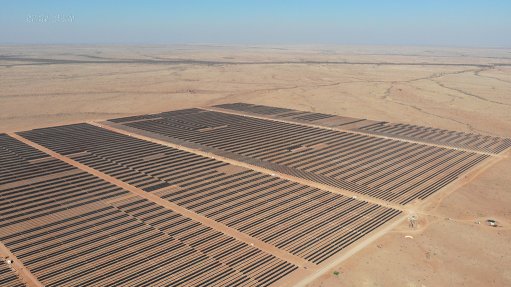Acoustics is wonderful, just not in SA
Most of my consulting practice deals with acoustics. After this information is received by another person, there follows the blank stare and then the dawning realisation: “Oh, you’re a sound engineer”.
“Nope,” I say. “A sound engineer has tattoos, chews gum, wears earrings and operates the mixing desk at the back of the theatre. An acoustics engineer designs the theatre.”
They nod, knowingly, but generally have no idea what acoustics is (Or what acoustics are). So, an article about acoustics!
Let’s start with coffee roasting – a process by which raw beans are turned into the stuff that my office consumes by the metric tonne.
This is an abstract from a paper on the subject by Preston S Wilson: “Cracking sounds emitted by coffee beans during the roasting process were recorded and analysed to investigate the potential of using the sounds as the basis for an automated roast-monitoring technique. “Three parameters were found that could be exploited. Near the end of the roasting process, sounds known as ‘first crack’ exhibit a higher acoustic amplitude than sounds emitted later, known as ‘second crack’. First crack emits more low-frequency energy than second crack. Finally, the rate of cracks appearing in the second crack chorus is higher than the rate in the first crack chorus.”
I feel for Mr Wilson when he tries to explain to strangers what exactly he does at the office, but, wow, what an interesting idea!
Moving on. It happens that, in warfare in mountainous regions, snipers can cause a great deal of damage to the opposition troops, especially where the snipers are from the local population. Thus, detection of snipers acoustically has become big business since, if the sniper is detected immediately after firing, then an appropriate response can be made by the soldiers being attacked.
This idea arose from systems used to detect gunshots in urban environments, first introduced in Menlo Park, California, in 1992 by John C Lahr, a PhD seismologist at US Geological Survey. The use of gunshot-detection systems has spread worldwide and a system is on trial in Hanover Park, Cape Town.
Even more! In Massachusetts Bay, also in the US, they use sonar buoys to detect whales. From their website: “The right whale listening network employs 13 ‘auto-detection buoys’ that listen for calling whales day and night. The buoys record underwater sounds and analyse them as the sounds come in. When the onboard software detects a whale call, the buoy makes a cell or satellite phone call to an analyst who verifies the information to be included in warnings sent to ships in the area.” The result is a “near real time whale map” (see www.listenforwhales.org).
On a more mundane note, a study conducted in 2012 found that classroom noise could be reduced by 36% with appropriate treatment and that teacher heart rates reduced by 10%.
So isn’t it all wonderful? Well, not in this country apparently. Nobody funds acoustics projects. We spend millions on unimaginative artwork but nothing on acoustics.
The acoustics of nearly every public building in this country are rubbish. Noise levels are too high. School children and students can’t hear the teaching staff. Courtroom noise levels make the proceedings unintelligible.
It’s not only the courtrooms and classrooms – employees are placed in open-plan offices where they work ineffectively owing to the noise levels. The reasons are simple: There is no degree offered in acoustics. Qualified acoustics engineers are rare. They have no influence. There is a general ignorance about the need for good acoustics.
Time and time again, I have attended meetings of professional teams where I submit a budget for acoustics finishes (this is for work for the contractor to do, not our fees) only to be told by the client or the quantity surveyor: “Sorry, we can’t afford that.”
This would be all very well, but the fact of the matter is that a single workstation in an open-plan office costs R 28 000, while nothing is spent on trying to create conditions where a person will actually work at that workstation. Acoustics is fun and interesting! Spread the word!
Comments
Press Office
Announcements
What's On
Subscribe to improve your user experience...
Option 1 (equivalent of R125 a month):
Receive a weekly copy of Creamer Media's Engineering News & Mining Weekly magazine
(print copy for those in South Africa and e-magazine for those outside of South Africa)
Receive daily email newsletters
Access to full search results
Access archive of magazine back copies
Access to Projects in Progress
Access to ONE Research Report of your choice in PDF format
Option 2 (equivalent of R375 a month):
All benefits from Option 1
PLUS
Access to Creamer Media's Research Channel Africa for ALL Research Reports, in PDF format, on various industrial and mining sectors
including Electricity; Water; Energy Transition; Hydrogen; Roads, Rail and Ports; Coal; Gold; Platinum; Battery Metals; etc.
Already a subscriber?
Forgotten your password?
Receive weekly copy of Creamer Media's Engineering News & Mining Weekly magazine (print copy for those in South Africa and e-magazine for those outside of South Africa)
➕
Recieve daily email newsletters
➕
Access to full search results
➕
Access archive of magazine back copies
➕
Access to Projects in Progress
➕
Access to ONE Research Report of your choice in PDF format
RESEARCH CHANNEL AFRICA
R4500 (equivalent of R375 a month)
SUBSCRIBEAll benefits from Option 1
➕
Access to Creamer Media's Research Channel Africa for ALL Research Reports on various industrial and mining sectors, in PDF format, including on:
Electricity
➕
Water
➕
Energy Transition
➕
Hydrogen
➕
Roads, Rail and Ports
➕
Coal
➕
Gold
➕
Platinum
➕
Battery Metals
➕
etc.
Receive all benefits from Option 1 or Option 2 delivered to numerous people at your company
➕
Multiple User names and Passwords for simultaneous log-ins
➕
Intranet integration access to all in your organisation

















